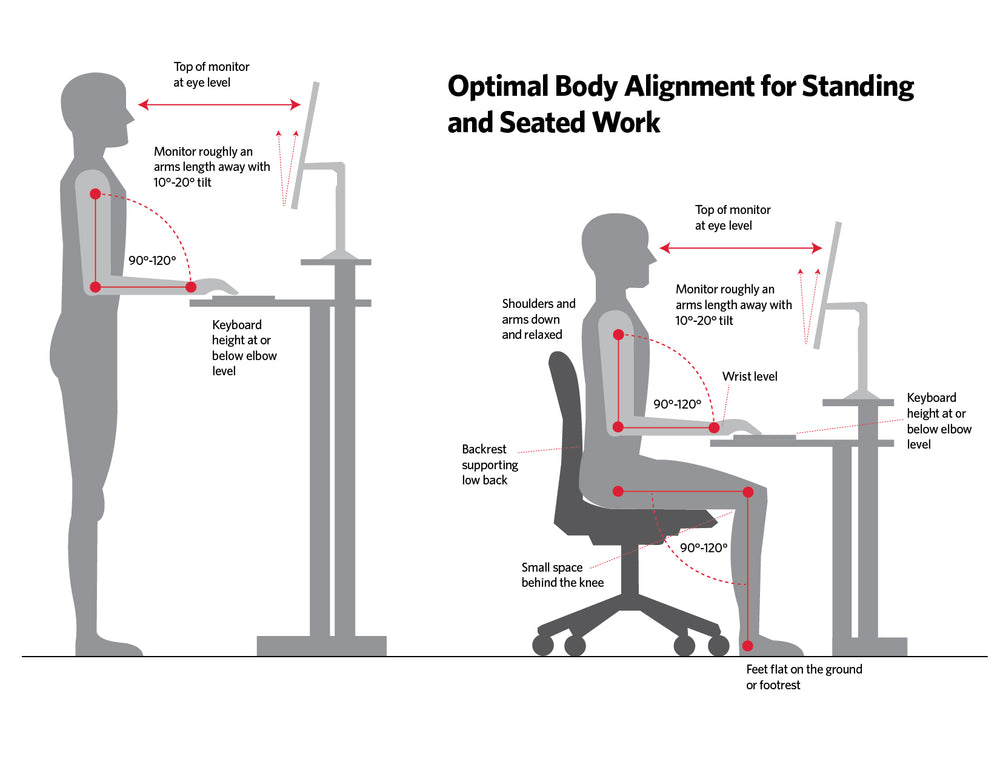Standing is Better for Your Heart than Sitting: Health Benefits Explained
Standing has come under the spotlight in recent health discussions, with a growing body of research indicating that more time spent on our feet could be beneficial for heart health.
Studies suggest that prolonged sitting may be linked to an increased risk of heart disease, while standing more often appears to have positive effects on cardiovascular health markers such as blood sugar levels and cholesterol.
Transitioning to a lifestyle that incorporates more standing can be simple and can have a significant impact over your lifetime. Small changes like standing while taking phone calls or opting for a stand-up desk can contribute to better heart health.

Moreover, standing burns more calories compared to sitting, which can contribute to weight management—an important factor in maintaining a healthy heart.
Key Takeaways
- Standing may reduce the risk of heart disease compared to prolonged sitting.
- Implementing more standing into daily routines can contribute to overall heart health.
- Benefits of standing include better blood sugar and cholesterol levels.
Health Benefits of Standing
Standing regularly can lead to multiple health benefits, particularly for heart health. It can enhance cardiovascular function and may reduce the risk of heart disease.
Standing is Good for Your Heart

Standing up for better heart health has been supported by research showing that less time sitting and more time on your feet leads to improvements in blood sugar levels, cholesterol, and weight management.
In this article from 2015, they determined that "excessive sitting time is related adversely to cardio-metabolic health, it is unknown whether standing is a suitable replacement activity or whether ambulatory movement is required". They went on to say "Standing is a simple alternative to sitting, and requires further examination in prospective and intervention studies."
In this article in November 2023, they said "Standing had positive associations with cardiometabolic health marker outcomes". Amazingly, they said that replacing sitting with sleeping would result in better health outcomes.
Cardiovascular System Enhancement
When standing, your metabolism tends to increase and can result in a slight uptick in calorie expenditure — about 0.15 calories per minute. Over time, this additional expenditure can contribute to weight loss, which again is beneficial for cardiovascular health.
The European Journal of Preventive Cardiology outlines that a person weighing 143 pounds could burn an extra 54 calories a day just by choosing to stand for six hours instead of sitting. The impact is significantly higher if you weigh over 200 lbs.
More details on this are available from a Harvard Health article.
Reduction in Heart Disease Risk
Besides promoting muscular activity and better blood sugar levels, standing may also contribute to prolonged lifespan when compared to people that sit for extended periods of time. Greater muscle activation and higher levels of sugar burning are some of the immediate benefits that favor heart health.
Over the long term, standing in lieu of sitting has been associated with improved health outcomes related to cardiovascular disease prevention, as discussed in an article by Fortune Well.
Comparison of Sitting vs. Standing
In the contemporary discussion on workplace ergonomics and personal health, the comparison between sitting and standing plays a crucial role, specifically in terms of their effects on heart health and blood circulation.
Impact on Blood Circulation
Standing promotes better blood circulation than sitting. This is because prolonged sitting can lead to blood pooling in the legs, a condition often associated with an increased risk of developing blood clots.
In contrast, standing helps to activate the muscular pump of the body, which supports the upward return of blood from the legs to the heart. Improved circulation not only benefits heart health but can also reduce the likelihood of swelling and varicose veins.
The small but significant changes in fasting blood glucose levels and body fat mass when replacing sitting with standing, as observed in a study cited by PubMed Central, further underscores the cardiovascular benefits of such an active posture.
Implementing a Standing Routine
Incorporating more standing into one's daily regimen offers benefits for heart health by reducing risks associated with prolonged sitting.
Transitioning from Sitting to Standing
When individuals decide to transition from a predominantly sedentary lifestyle to one that incorporates more standing, it's important to make the change gradually.
Starting with short intervals of standing and incrementally increasing the duration helps the body adjust without causing discomfort or fatigue.
Utilizing a sit-stand desk can aid in this transition by allowing users to alternate between sitting and standing with ease.
Try using a standing desk mat to start off. Here are a couple of choices to consider:
Our Top Pick
The Standing Desk Mat
Details: 32"W x 20"D x 3/4" Thick
Pros: Low price, durable and long lasting
Cons: Flat surface doesn't feature contours that allow you to fidget with or massage your feet.
Our Top Pick
The Ergo Desk Mat
Details: 25"W x 19"D x 2.5" Thick
Pros: Features contours around the perimeter and ridges that allow you to do calf raises and massage your feet
Cons: Price
Practical Tips for Standing More
- Work Environment: Adjust the workspace with a standing desk or a high table to encourage standing during tasks that do not require sitting.
- Timers: Set reminders to stand for 5 to 10 minutes every hour during the workday.
- Meetings: Opt for standing or walking meetings rather than sitting in a conference room.
- Public Transport: Stand instead of sitting when using public transport, if it's safe to do so.
- Television Time: Stand or do simple exercises while watching television.
By integrating these strategies, individuals can increase their standing time and promote better heart health.
Frequently Asked Questions
Standing regularly can lead to improvements in heart health, such as lowering the risks associated with sedentary behaviors, like heart disease. Here's what you need to know about the cardiovascular implications of standing versus sitting.
1. What are the cardiovascular benefits of standing versus sitting?
Standing promotes increased blood flow and generally requires more effort from the heart compared to sitting. As a result, it can better your health by lowering blood sugar and cholesterol levels, which are beneficial factors for cardiovascular well-being.
2. Can prolonged sitting increase the risk of heart disease?
Yes, prolonged sitting has been linked to a higher risk of heart disease. It is associated with increased blood sugar and cholesterol levels, as well as higher instances of obesity, all of which are risk factors for heart disease.
3. How does standing impact heart health compared to sitting?
Standing can lead to a slight increase in calorie expenditure, which may translate to weight benefits and improved heart health. It also leads to better blood circulation compared to the sedentary state of sitting.
4. Are there health advantages to alternating between sitting and standing?
Alternating between sitting and standing can help mitigate the risks associated with prolonged sitting. By doing so, individuals can manage blood sugar levels more effectively and potentially reduce the risk of heart disease.
5. What amount of standing is recommended to improve heart health?
Specific recommendations can vary, but incorporating regular intervals of standing throughout the day, such as standing for a few minutes every hour, can contribute to heart health benefits.
6. Do standing desks offer any heart health benefits over traditional desks?
Standing desks can encourage more movement and reduce the amount of time spent sitting. Using a standing desk can therefore offer benefits for heart health including weight management and improved blood circulation.
Conclusion: Standing is Better for Your Heart than Sitting
Nothing is guaranteed to result in better health outcomes for every person, but you want to increase your odds by incorporating movement throughout the day. Utilizing a standing desk gets you off your feet more often.
If you're new to standing desks, like any new routine, it is best to gradually transition into using one. If you have been sitting at your desk for many years, it will be hard on your feet at first.










